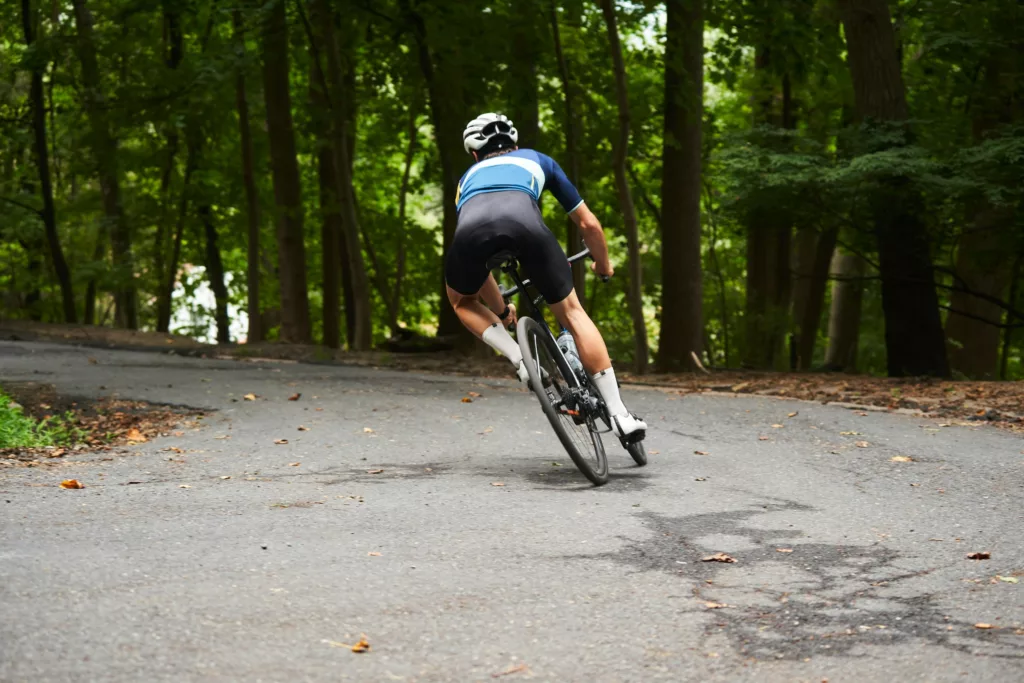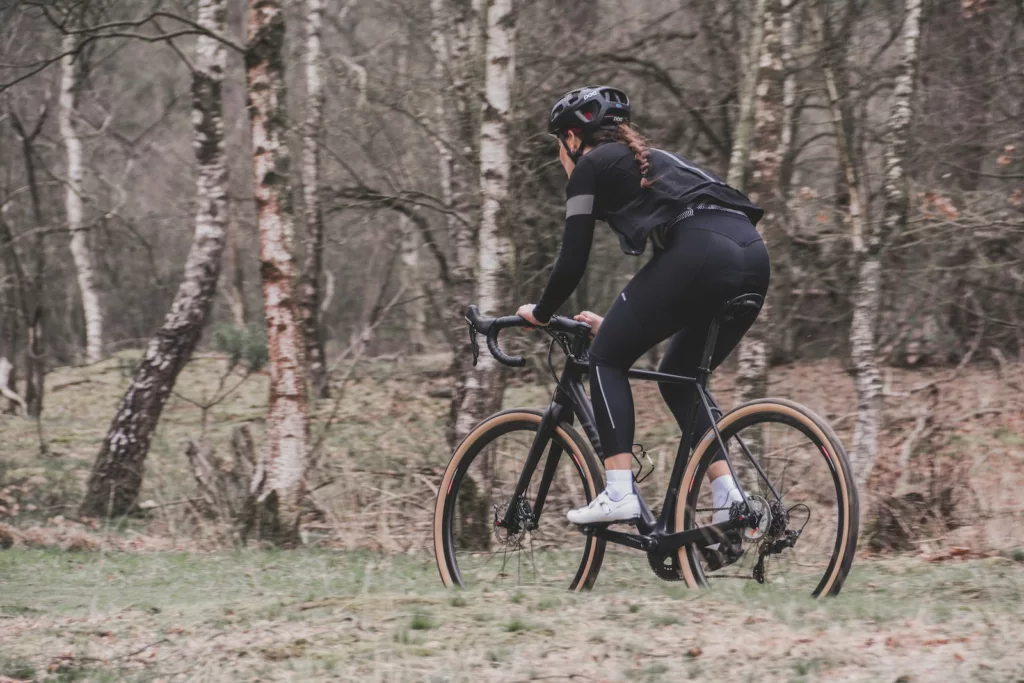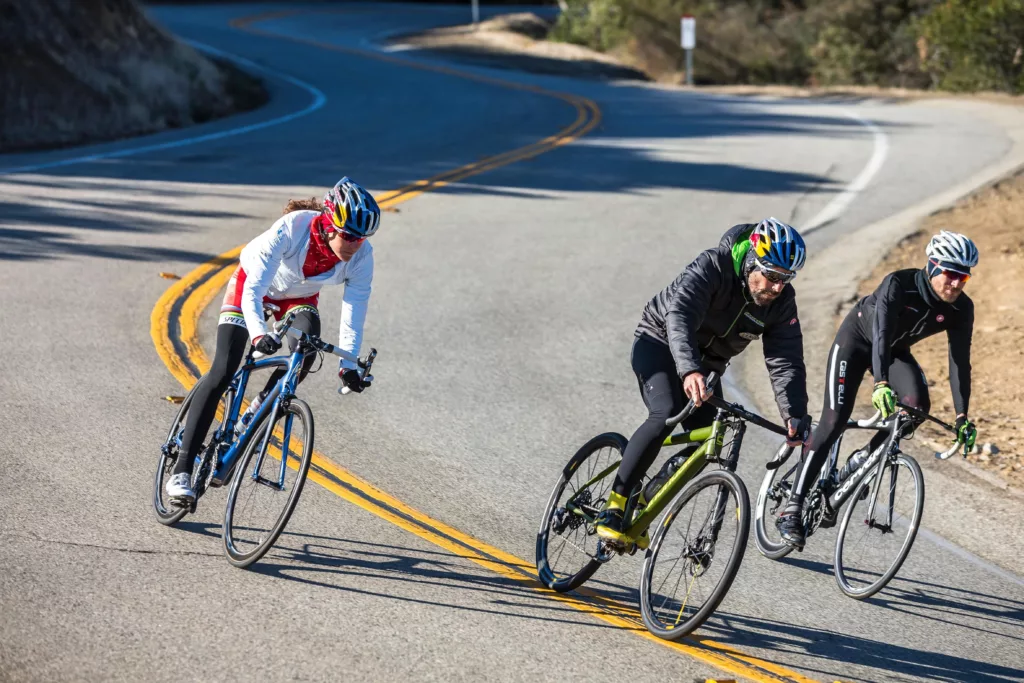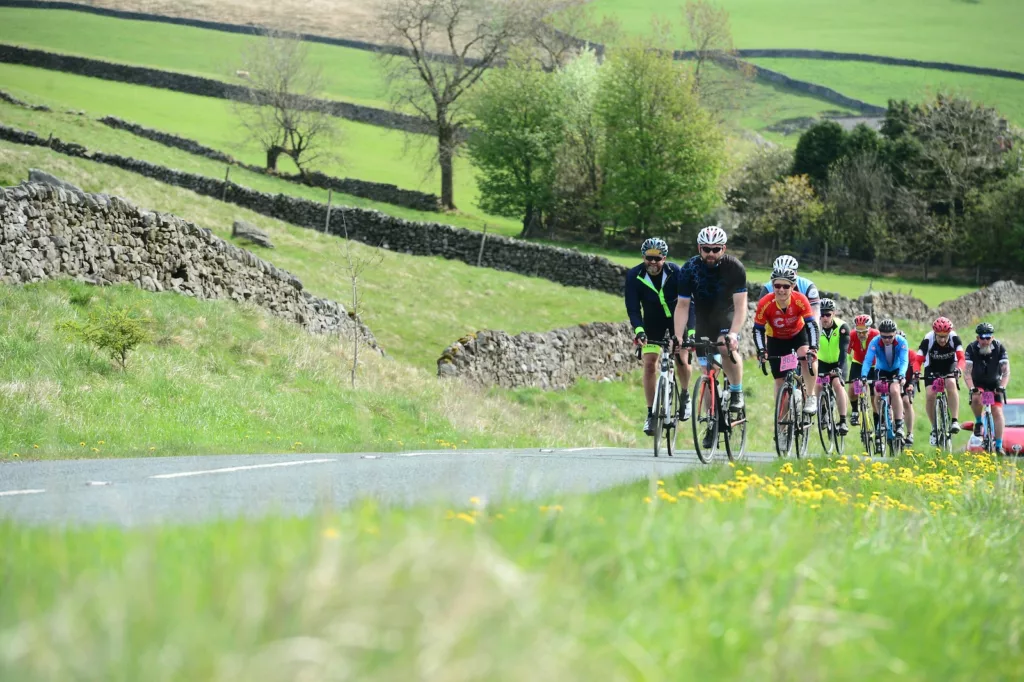Understanding average cycling speed is crucial for cyclists of all levels, whether they are beginners aiming to gauge their progress or seasoned riders looking to optimise performance. This article explores the factors that influence average cycling speed, such as fitness levels, terrain, bike type, and riding conditions. We’ll provide insights into what constitutes a good average speed for various cycling disciplines and offer tips on how cyclists can improve their own speeds. Whether you’re commuting, road racing, or enjoying a leisurely ride, knowing about average cycling speeds can help set realistic goals and track improvements over time.
Table of Contents
Toggle1. What is the average cycling speed for beginners?
Cycling is a versatile sport that caters to a wide range of fitness levels. For beginners, the average cycling speed can vary greatly based on several factors. These factors include the type of bike, the terrain, and the cyclist’s physical condition. On a flat surface, a beginner can expect to average around 10-14 mph on a road bike.
However, this speed can decrease when cycling on rough terrains or uphill. The type of bike also plays a significant role. Road bikes are designed for speed, while mountain bikes and hybrids are slower but offer more stability. It’s important for beginners to start at a comfortable pace and gradually increase their speed as their fitness improves.
Cycling is not just about speed. It’s also about endurance, strength and enjoying the ride. Beginners should focus on developing their cycling skills and fitness level before worrying about their speed. With regular practice and proper training, beginners can significantly improve their average cycling speed.
Remember, it’s not a race. It’s about improving your health and fitness while enjoying the ride. So, don’t be discouraged if your average speed is lower than others. Everyone starts somewhere, and with time and practice, you’ll see improvement.
2. How can I increase my average cycling speed?
Increasing your average cycling speed is a common goal among cyclists. It’s a clear indicator of improved fitness and cycling proficiency. However, increasing your speed is not as simple as pedalling faster. It requires a combination of improved fitness, better cycling techniques, and sometimes even a better bike.
Firstly, regular training is crucial. The more you ride, the better you’ll get. Try to incorporate a variety of workouts into your training routine, including long rides for endurance, high-intensity interval training for speed, and hill climbs for strength.
Secondly, improving your cycling technique can also help increase your speed. This includes maintaining a proper cycling posture, learning how to shift gears effectively, and mastering the art of cornering.
Thirdly, the type of bike and its condition can significantly impact your speed. Road bikes are generally faster than mountain bikes or hybrids. Also, a well-maintained bike can make a big difference. Regularly check your tyres’ pressure, keep your chain clean and lubricated, and ensure your brakes are working properly. Some aero wheels can also make quite a bit of difference too.
Lastly, don’t forget about the importance of rest and recovery. Overtraining can lead to fatigue and injury, which will ultimately slow you down. So, make sure to take adequate rest days and listen to your body.

3. What factors affect average cycling speed?
Several factors can affect your average cycling speed. Some of these factors are within your control, while others are not. Understanding these factors can help you improve your speed and overall cycling performance.
Firstly, your fitness level plays a significant role. The fitter you are, the faster you’ll be able to cycle. Regular training can improve your strength, endurance, and cardiovascular fitness, all of which contribute to a higher average speed.
Secondly, the type of bike you’re using can also affect your speed. Road bikes are designed for speed and are typically faster than mountain bikes or hybrids. The weight of the bike can also impact your speed, with lighter bikes generally being faster.
Thirdly, the terrain and weather conditions can significantly impact your speed. Cycling uphill or against the wind can slow you down, while cycling downhill or with the wind can increase your speed. Similarly, cycling on rough terrains can be slower compared to smooth, paved roads.
Lastly, your cycling technique can also affect your speed. This includes your cycling posture, your pedalling technique, and your ability to shift gears effectively.
4. Does weight affect average cycling speed?
Weight can indeed affect your average cycling speed, both in terms of your body weight and the weight of your bike. A heavier cyclist or bike will require more energy to move, which can slow down your average speed. This is especially noticeable when cycling uphill, where gravity plays a significant role.
However, weight is not the only factor that affects cycling speed. Other factors, such as fitness level, cycling technique, and the type of bike, can also play a significant role. So, while losing weight can help increase your speed, it’s not the only solution.
It’s also important to note that while being lighter can help increase your speed, it’s not always beneficial. For example, in downhill cycling or in windy conditions, a heavier cyclist may actually have an advantage due to increased stability and momentum.
So, while weight can affect your average cycling speed, it’s just one piece of the puzzle. A comprehensive training program that includes strength training, endurance workouts, and cycling technique drills can help you increase your speed, regardless of your weight.
5. How does wind affect average cycling speed?
Wind can significantly affect your average cycling speed. Cycling against the wind, also known as cycling into a headwind, can be challenging and slow you down. On the other hand, cycling with the wind, or having a tailwind, can increase your speed.
The effect of wind on cycling speed is due to air resistance. When you’re cycling against the wind, you’re essentially cycling against a force that’s pushing you back. This requires more energy and can slow down your average speed.
However, it’s not all bad news. Cycling against the wind can be a great workout. It can help improve your strength and endurance, both of which can help increase your average speed in the long run.
On the other hand, cycling with the wind can make your ride easier and faster. However, it’s important to be cautious when cycling with a strong tailwind, as it can make controlling your bike more challenging.
So, while wind can affect your average cycling speed, it can also provide opportunities for a great workout. With the right mindset and techniques, you can turn a windy day into a productive training session.

6. Does cycling uphill affect average speed?
Cycling uphill can significantly affect your average speed. When you’re cycling uphill, you’re working against gravity, which requires more energy and can slow you down. This is why your speed tends to decrease when you’re cycling uphill, even if you’re putting in the same amount of effort.
However, cycling uphill is not just about speed. It’s also a great workout for your legs and cardiovascular system. It can help improve your strength and endurance, both of which can contribute to a higher average speed in the long run.
There are also techniques you can use to improve your uphill cycling speed. These include maintaining a steady pace, using your gears effectively, and standing up on the pedals when necessary.
So, while cycling uphill can slow down your average speed, it can also provide a great opportunity to improve your fitness and cycling skills. With the right techniques and mindset, you can turn those challenging hills into a valuable part of your training routine.
7. How does tyre pressure affect average cycling speed?
Tyre pressure can significantly affect your average cycling speed. Tyres that are not properly inflated can create more rolling resistance, which can slow you down. On the other hand, tyres that are inflated to the correct pressure can reduce rolling resistance and help you cycle faster.
However, the optimal tyre pressure can vary based on several factors. These include the type of bike, the type of tyres, the terrain, and the cyclist’s weight. For example, road bikes typically require higher tyre pressure than mountain bikes. Similarly, heavier cyclists may need higher tyre pressure to support their weight.
It’s also important to note that over-inflating your tyres can make your ride less comfortable and potentially increase the risk of a puncture. So, it’s important to find the right balance.
Regularly checking your tyre pressure and adjusting it as necessary can help you maintain your average speed and make your ride more comfortable. It’s a simple task that can make a big difference in your cycling performance.
8. How does gear shifting affect average cycling speed?
Proper gear shifting can significantly affect your average cycling speed. Gears are designed to help you maintain a steady pedalling speed, or cadence, regardless of the terrain. By shifting gears effectively, you can maintain your cadence and conserve your energy, which can help you cycle faster.
When you’re cycling on a flat surface, you can use a higher gear to increase your speed. When you’re cycling uphill, you can shift to a lower gear to make pedalling easier. Similarly, when you’re cycling downhill, you can shift to a higher gear to take advantage of the momentum and increase your speed.
However, gear shifting is not just about speed. It’s also about comfort and efficiency. By maintaining a steady cadence, you can reduce the strain on your legs and make your ride more enjoyable.
Learning how to shift gears effectively can take some practice. But once you master it, it can significantly improve your cycling performance and average speed.

9. How does drafting affect average cycling speed?
Drafting, or cycling closely behind another cyclist, can significantly affect your average cycling speed. When you’re drafting, you’re essentially riding in the slipstream of the cyclist in front of you. This reduces air resistance and allows you to cycle faster with less effort.
Drafting is a common technique in professional cycling and can be very effective in increasing your average speed. However, it requires good bike handling skills and trust in the cyclist in front of you. It’s also important to communicate effectively with the other cyclist and take turns leading and drafting.
However, drafting is not always appropriate or safe. For example, it’s not recommended when cycling in heavy traffic, on rough terrains, or in poor weather conditions. It’s also important to maintain a safe distance from the cyclist in front of you to avoid collisions.
So, while drafting can increase your average cycling speed, it’s important to use this technique responsibly and safely.
10. How does age affect average cycling speed?
Age can indeed affect your average cycling speed. As we age, our physical fitness generally decreases, which can slow down our average speed. This includes a decrease in muscle mass, cardiovascular fitness, and flexibility.
However, age is not the only factor that affects cycling speed. Other factors, such as fitness level, cycling technique, and the type of bike, can also play a significant role. So, while ageing can slow down your average speed, it’s not the only factor.
It’s also important to note that regular exercise, including cycling, can help slow down the effects of ageing on physical fitness. So, even as you age, you can still maintain a good cycling speed with regular training and a healthy lifestyle.
So, while age can affect your average cycling speed, it doesn’t have to stop you from enjoying cycling and improving your performance. With the right training, technique, and mindset, you can continue to enjoy cycling at any age.






